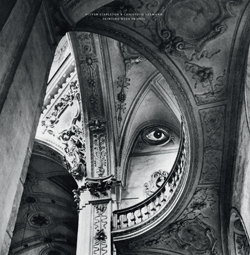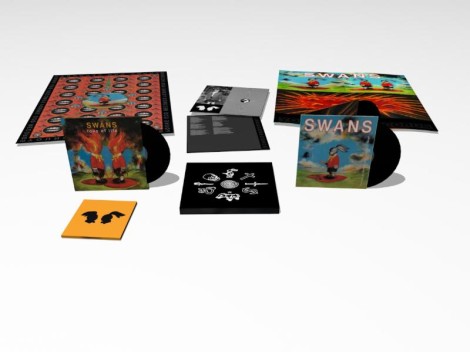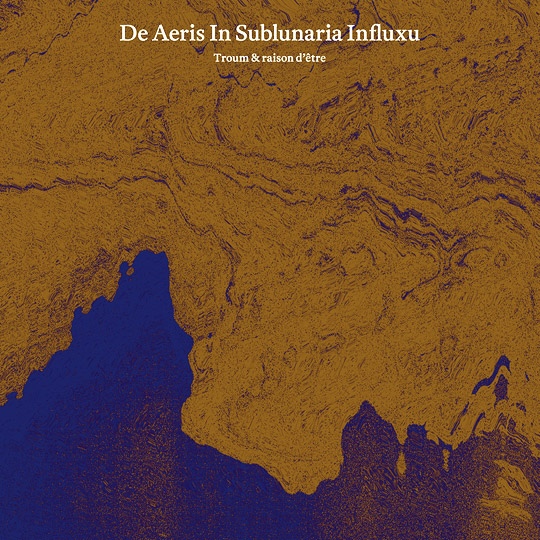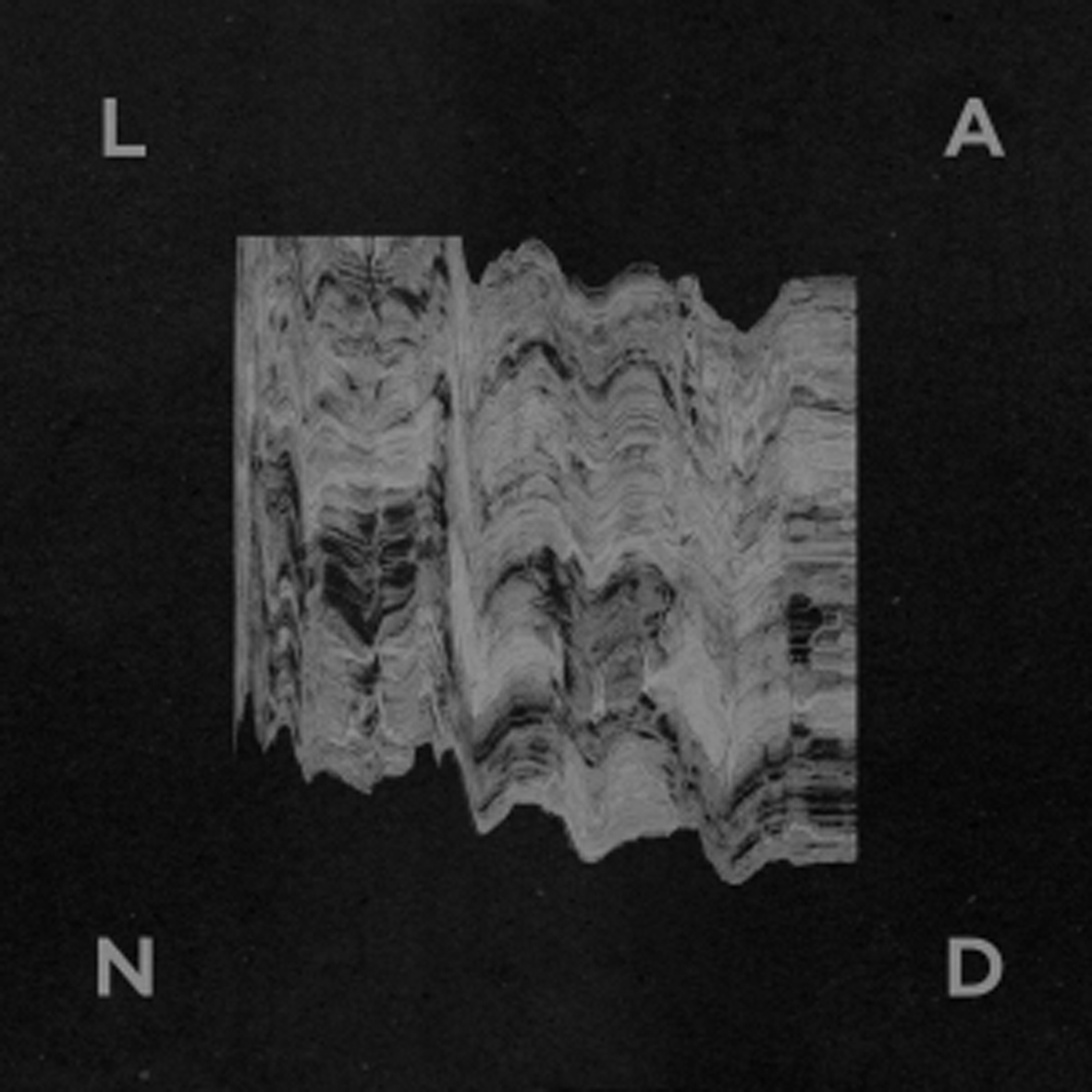- Administrator
- Albums and Singles

I’m going to do something I never do – I’m going to write this press release in the first person.
This is a very special release and it’s been a long time coming. I met Arash Moori when we both attended the same Art School in Birmingham in 2000. We quickly realized that we both liked music – I think it was a shared love of To Rococo Rot or Metamatics that sparked the first conversation – and within weeks of meeting each other we were DJing fairly regularly. We kicked off a number of nights in the city, some successful (Default, which birthed the Type label), some not (Left Handers Disco, which confounded punters who didn’t understand how well Kelis mixed with snd). Arash was also kind enough to teach me some production tricks as I was putting together my first album.
Over the years, Arash pieced together a deeply personal palette of electrical sounds from strobe lights, fluorescent lights, radios, plasma balls and electronic devices. He exploited the peculiarities of these devices to create harsher and more aggressive sounds. This gave way to a series of live performances using minimal hardware and self-built devices to structure, shape and trigger sounds rather than resorting to samples. The computer was an editing device, not a compositional one.
Heterodyne is the culmination of these experiments. The resulting tracks are far more than academic exercises: Arash has taken years of theory and woven together a spiky collection of coarse techno and disorienting drone. The raw electrical textures and rhythms he spent years collecting are framed by analogue synth pads and oscillators which add contrast and levity. It’s a demanding listen, certainly, but a rewarding one.
This is an album I’ve seen develop for longer than any other and it’s a pleasure to unleash it on the world. Our own collaboration LP (touted for release on City Centre Offices in the early 00s) will never see the light of day, but Heterodyne may be one of the most personal records I’ve released on Type to date. Enjoy.
-John Twells, October 2015.
More information can be found here.
Read More
- Administrator
- Albums and Singles

Italian artist Andrea Taeggi’s latest full-length is a rich exploration of tense, rhythmic minimalism. Unlike his work with Koenraad Ecker as Lumisokea and his material under the Gondwana moniker, Mama Matrix Most Mysterious showcases Taeggi’s interest in finding strength in simplicity. Taeggi was able to limit himself by working on old modular synthesizer systems – the Buchla and the Serge to be exact. “I needed to adapt to them,” he admits. “I don’t actually master them, which isn’t necessarily a disadvantage.”
This playfulness buoys Mama Matrix Most Mysterious throughout, distancing it from the litany of self-involved modular synth LPs filling the shelves right now. Rather, the Serge and Buchla systems allowed the Italian producer to realize his rhythmic and timbric visions. Taeggi filters decades of beat-driven electronic music through these machines to come up with a record of chattering bass-heavy experiments that sound like little else. You’d struggle to dance to it, but Taeggi’s sound is so physical that you can almost feel the electricity running through the circuits. And isn’t that exactly what electronic music should be about?
More information can be found here.
Read More
- Administrator
- Albums and Singles

Christopher Bissonnette:
"This new series of works reflects an evolution of my adeptness with modular synthesis. As with my previous release Essays in Idleness, Pitch, Paper & Foil was constructed from a range of synthesis and compositional techniques. The goal with this album was to form a collection that exhibits more restraint than previous works. Modular synthesis can be an unruly medium and taming it in order to produce delicate or subtle tones can be challenging. As with Essays, I have allowed the artifacts of the process to find their way into the finished product. Tape noise, distortion and by-products of the random sequencing method all contribute to the character of the final recordings."
Kranky:
Continuing the explorations of the analog synthesizer first revealed on his last album, Bissonnette's deft touch in recording and mixing is a joy to experience. While most contemporary analog synth slingers find themselves unable to not overload the sound-field with the endless array of possibilities the instrument provides, Bissonnette provides a master class in economy and control.
More information can be found here.
Read More
- Administrator
- Albums and Singles

Since his self-titled LP debuted on Peak Oil in 2012, M. Geddes Gengras has amassed a following for his distinctive take on synthesis, with releases on Umor Rex, Leaving, and Opal Tapes. New Lines is his anticipated homecoming to Peak Oil.
“New Lines” sees Gengras delve deeper into the copper plated, arpeggio spewing nooks and crannies of his prodigious modular synthesizers, dragging them across vast expanses of infinity oscillations via stops in Detroit techno’s neo-romantic strings (“Bushi”) and Manchester’s early 90s grime-soaked IDM clatter (“Cris Rose”).
When absorbed in its entirety, New Lines is an expansive step forward for Gengras’ futurist sonic explorations.
More information can be found here.
Read More
- Administrator
- Albums and Singles

In 2015, Room40 is proud to announce the release of a series of works from American guitarist and composer Norman Westberg.
Best known for his work with the seminal outfit SWANS, Westberg’s output beyond that group is sprawling and restless. His name recurs and ripples through many interconnected micro-histories surrounding New York City’s music and art scenes. From appearances in film works associated with the Cinema Of Transgression, through to his participation in bands such as The Heroine Sheiks and Five Dollar Priest, Westberg’s name is woven deeply into the fabric of New York over the past three decades.
His debut release with Room40 is 13. Originally recorded in 2013, Thirteen has previously only been available in an ultra-limited hand made edition of just 75 copies.
The Room40 edition of 13 has been completely re-mastered and edited and is available for the first time digitally, as well as in an elegant physical edition.
A note from Lawrence English:
“Norman Westberg’s guitar playing with SWANS has influenced a generation of musicians across genres. I can personally attest to how his particular approaches to that instrument, in creating both harmony and brute force, have challenged and ultimately influenced my own sonic preoccupations.
What Norman has created with his solo works is an echoing universe of deep texture and harmonic intensity. His solo compositions generate an affecting quality that drives the listener towards reductive transcendence.
His guitar, as singular source, becomes transformed through a web of outboard processes. He transforms vibrating strings completely, taking singular gesture and reshapes it through webs of delay, reverb and other treatments. To me, these works echo many of the concerns of American minimalism and sprawl towards the work of bands such as Stars Of The Lid. Norman has created a very dense and powerful statement of intent with these recordings and I couldn’t be more pleased to have some small part in helping to share them.”
More information can be found here.
Read More
- Administrator
- Albums and Singles
 In association with Yesmissolga and Elica Editions, Robot Records is very pleased to announce a vinyl release of the long-fabled Stapleton/Heemann duo collaboration. This historic live recording took place on 21 November, 2009 at the Ancient Synagogue in Ivrea, Italy. Apart from working together over many years on various Current 93, Nurse With Wound, and the H.N.A.S. Melchior sessions, this live document captures a rare moment where two old friends meet completely independent of thematic material, engaged in a near telepathic mysterious one-to-one improvisation, where textural worlds merge, hot, on the spot. While one may discover an intriguing intersection between each of their respective solo works, the real magic of this duo encounter evokes something strangely unfamiliar and all together new. With this generous edit of the highly acclaimed concert, Painting With Priests exhibits a rare session of both artists' eccentric talents in a palette of colors and mystery across a highly detailed musical canvas. Front cover features new artwork by Stapleton, with back cover featuring a previously unpublished drawing by Heemann.
In association with Yesmissolga and Elica Editions, Robot Records is very pleased to announce a vinyl release of the long-fabled Stapleton/Heemann duo collaboration. This historic live recording took place on 21 November, 2009 at the Ancient Synagogue in Ivrea, Italy. Apart from working together over many years on various Current 93, Nurse With Wound, and the H.N.A.S. Melchior sessions, this live document captures a rare moment where two old friends meet completely independent of thematic material, engaged in a near telepathic mysterious one-to-one improvisation, where textural worlds merge, hot, on the spot. While one may discover an intriguing intersection between each of their respective solo works, the real magic of this duo encounter evokes something strangely unfamiliar and all together new. With this generous edit of the highly acclaimed concert, Painting With Priests exhibits a rare session of both artists' eccentric talents in a palette of colors and mystery across a highly detailed musical canvas. Front cover features new artwork by Stapleton, with back cover featuring a previously unpublished drawing by Heemann.LP version available here: www.robotrecords.com

Read More
- Administrator
- Albums and Singles

Swans continue their remastered reissues series on Young God Records/Mute with the release of White Light from the Mouth of Infinity and Love of Life on Dec. 4 2015.
The two albums will be initially released as a limited vinyl box set, presented in the original restored artwork, which includes paintings by Deryk Thomas. The 2500 micron black lined box - with original logo in silver foil block in black paper - will also include 2 rare posters, a CD of outtakes and contemporaneous live recordings and a download code for both albums.
In addition, White Light from the Mouth of Infinity and Love of Life will be available as a 3xCD set (which will include the bonus disc), individual vinyl albums and digitally.
White Light from the Mouth of Infinity, Swans’ seventh studio album originally released in 1991, is considered the starting point for the second section of Swans' inimitable history. Described as "…the glistening, glimmering sounds of the pensive countryside" by Stereogum, this will be the first time White Light from the Mouth of Infinity has been available on vinyl since its original release on Young God Records in 1991. The vinyl issue will include the track "Blind," not included in the original release.
Love of Life, the band’s eighth studio album, followed soon after in 1992. According to Allmusic’s Ned Ragget, "Love of Life continues the astounding creative roll Swans found themselves on … yet another Swans masterpiece." The vinyl version of this album has also been unavailable since its original release.
More information can be found here.
Read More
- Administrator
- Albums and Singles

Steve Hauschildt's new album is his first since the late 2012 release of Sequitur. Although Where All Is Fled sonically harkens back to his earlier albums such as Rapt for Liquid Minister and Tragedy & Geometry, it slowly becomes apparent that it is also a divergence from those recordings.
Both the artwork and the music on this new work were heavily inspired by surrealist landscape paintings, early alchemical emblems, and recurring visions.
The result is a pristine series of cascading melodies, fantastical terrains of layered lattices, and overlapping patterns of synthesizers superimposed with orchestral instrumentation. Hidden in the crevices of the album are processed crowd sounds, re-sampled text-to-speech synthesis, piano, and animal noises which reveal themselves after repeated listens and blur together notions of artificial and natural sound. While slowly unfurling, each sound is given it's own place and space, never hurried, never cluttered.
More information can be found here.
Read More
- Administrator
- Albums and Singles

Zelienople exist as a unique entry in the pantheon of Chicago musicians pushing the boundaries of genre. The quartet takes basic song-structures and textural palates of folk and rock and infuses them with the spontaneous fluidity of jazz and the shimmering haze of ambient music, emphasizing subtle facets of each genre to create their own individual style.
Show Us The Fire is Zelienople’s first album for Chicago’s Immune Recordings and shows the band taking a more simplified approach to recording. These songs were written with live performance in mind, with each band member sticking to their primary instrument on every song. Zelienople, like Codeine before them, are masters of hushed anxiety, burying anger and discontent under layers of reverb and masking it with slow tempos.
More information can be found here.
Read More
- Administrator
- Albums and Singles
 I do not think there are two currently active artists that capture the classic ambient sound, faithful to its inception, with an appropriate tinge of post-industrial darkness than Troum and raison d'étre. The former lean more towards a lighter, delicate sonic purity, while the latter's work is colored with the darkness and malignant sounds of the associated Cold Meat Industries label. This collaboration then seems the perfect setup for these two artists who are similar, but complement each other well in their differences. The result is a largely satisfying collaboration that sounds as it should given the two artists, but occasionally hindered by some duller moments.
I do not think there are two currently active artists that capture the classic ambient sound, faithful to its inception, with an appropriate tinge of post-industrial darkness than Troum and raison d'étre. The former lean more towards a lighter, delicate sonic purity, while the latter's work is colored with the darkness and malignant sounds of the associated Cold Meat Industries label. This collaboration then seems the perfect setup for these two artists who are similar, but complement each other well in their differences. The result is a largely satisfying collaboration that sounds as it should given the two artists, but occasionally hindered by some duller moments.
The best elements of De Aeris In Sublunaria Influxu are those that most clearly show the two projects both shining through, resulting in a contrast that is never too drastic, but strikes a perfect equilibrium.The all too short opening "Folia" sets the bar high, with the artists pairing light and peaceful electronics with a more unsettling rattling crunch.At only three minutes, it feels like it should go on a bit longer."Atmosphaera" is a similar piece, pairing pure, ghostly tones and a slightly noisy crackle.The second half, however, becomes more focused on the tone.
When the projects bring in more rhythmic components, albeit very subtle, it also results in strong, standout pieces."Oculum Mundi" features a heavily reverberated rhythmic pattern that is mixed with murky, subterranean sounds.With hints of melody shining through the darkness, the piece feels more like raison's than Troum's.The nearly 19 minute "Meditationum" brings so many of these elements together, first from a light electronic opening into sweeps of noise that make for a strong textural counterbalance.Later, a rhythmic pulse is intertwined with a slightly fuzzy, noisy sheen that verges on dissonance but never fully departs from a more peaceful, musical mood.
Other moments, however, are strong but simply do not manage to captivate as effectively."Alio Tempore" is constructed from a combination of deep booms and lighter chimes, acting the foundation that sweeping electronics are layered upon, building to a thicker, richer sound by the conclusion.However, I felt my attention dropping in and out throughout, because there is not a significant amount of variation to be had."Ad Infinitum" is one of the heaviest, darkest moments on the record, but its tension is offset by sounding a bit too much like dark ambient by the numbers, rather than any specific creativity or originality.
Taken as a whole, however, De Aeris In Sublunaria Influxu is a strong collaboration between two artists who have well established their expertise with this style of music.At nearly 70 minutes, it is not all too surprising that an album of this length, and of this style, would have moments where it would drag.Those less intriguing moments are not necessarily bad, they are just a bit too predictable and straightforward.The strong moments definitely eclipse the lesser ones, however, making for a strong collaboration.
samples:
 
Read More
- Administrator
- Albums and Singles
 I enjoyed L A N D’s debut album quite a bit, but I was completely knocked sideways by the radical transformation that has occurred with Anoxia.  Now apparently a Daniel Lea solo project (Matthew Waters is gone), this latest album completely abandons the industrial noir-jazz aesthetic of its predecessor in favor of something that resembles some sort of sci-fi tribal death cult armed with nothing but junkyard percussion and some stolen construction equipment.  I could not possibly be happier or more surprised with that change.
I enjoyed L A N D’s debut album quite a bit, but I was completely knocked sideways by the radical transformation that has occurred with Anoxia.  Now apparently a Daniel Lea solo project (Matthew Waters is gone), this latest album completely abandons the industrial noir-jazz aesthetic of its predecessor in favor of something that resembles some sort of sci-fi tribal death cult armed with nothing but junkyard percussion and some stolen construction equipment.  I could not possibly be happier or more surprised with that change.
Content aside, the most fascinating aspect of Anoxia is that Daniel Lea does not appear to have played any of the percussion on a solo album that is almost entirely percussive in nature.  Instead, he is credited with sound design, field recordings, processing, and electronics, which I suppose makes L A N D something of an Ivo Watts-Russell/This Mortal Coil scenario: an artist with a bold vision outside the scope of his abilities, but a distinct talent for finding collaborators who can make it happen.  It makes sense that Daniel Lea is a sound designer though, as the only real similarity between Night Within and Anoxia is that both sound great.  Lea clearly has superb attention to detail and a deep understanding of space and density.  Also, he was smart enough to involve Rashad Becker and Ben Frost for mastering and mixing, thus ensuring that these pieces emerge from speakers with maximum visceral force and crystalline clarity (no one does loud and visceral better than Ben Frost).  Actually, I suppose there is a second similarity as well: both albums are extremely "cinematic" in nature, but with a very important distinction: Night Within sounded like a decontextualized soundtrack in need of a film, while a piece like Anoxia's "Metamorphosis" could make a ten-minute shot of a goddamn wall seem intense and menacing.
Unlike This Mortal Coil, however, Daniel Lea actually composed all of these pieces, which is equally fascinating given how precious little non-percussion music Anoxia contains.  In fact, I suspect I could have easily been fooled if someone had presented Anoxia to me as "the Black Pus/Lightning Bolt guy made an ambient album."  That is how it seems at first glimpse anyway, as only a handful of pieces boast any prominent musical component at all.  For example, "Transition" gradually builds into a beautifully quivering and shivering drone motif, while the aforementioned "Metamorphosis" is built upon a wonderfully tense and spectral throb.  In most other cases, however, the "music" is relegated to a vague haze that seems to bubble up or simmer over a complexly bludgeoning and hypnotic percussion pattern.
When scrutinized more closely, however, it is clear that most of the composing is just not immediately obvious because so much of Anoxia was played on unconventional instruments like crotales, an aluphone, and an array of copper pipes.  In fact, nearly every groove on the album is embellished with at least one layer of chiming, plinking, clanging, and ringing metal.  Also, it all sounds beautifully sharp, immediate, and physical due to Lea's talents as a sound designer.  That is where Anoxia borders on genius, as there are several pieces that sound like someone is beating an oil tanker hull with a sledgehammer, playing drums in an empty cistern, or jackhammering the studio.
For the most part, Anoxia so completely eclipses Night Within that it sounds like a completely different band.  That said, however, it is dogged somewhat by one of the same flaws as its predecessor in that many of these nine pieces sound like vamps on a single motif rather than structured, evolving compositions.  Fortunately, most of Anoxia’s pieces are so vibrant and compelling that it does not matter.  Also, Lea did a fairly ingenious job sequencing the album, allowing each piece to segue into the next relatively seamlessly, successfully creating the illusion that some kind of evolution or transformation is occurring within each song. It is not an illusion that Anoxia is a huge evolution for L A N D though.  Daniel Lea has truly outdone himself with this pummelingly heavy, inventive, complex, and distinctive tour de force.
 
Read More

